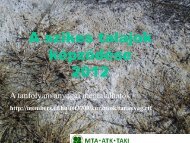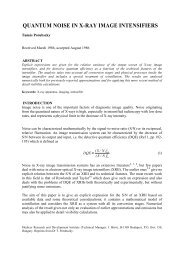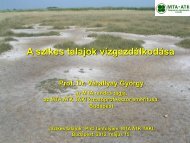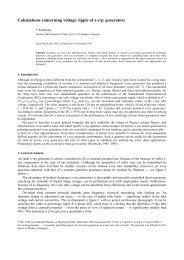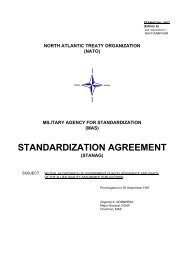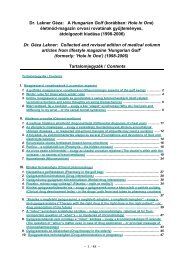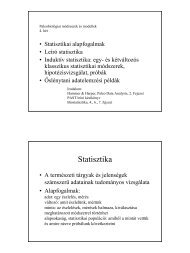Abstract form
Abstract form
Abstract form
You also want an ePaper? Increase the reach of your titles
YUMPU automatically turns print PDFs into web optimized ePapers that Google loves.
Salinity control under saline shallow ground water conditions of the<br />
San Joaquin Valley, California<br />
Blaine HANSON* 1 , Don MAY 1 , Jirka ŠIMŮNEK 2 , Jan HOPMANS 1<br />
1 Dept. of Land, Air and Water Resources, University of California, Davis, CA, USA<br />
2 Dept. of Environmental Sciences, University of California, Riverside, CA, USA<br />
*Corresponding author’s email: brhanson@ucdavis.edu<br />
Shallow saline ground water conditions have caused soil salinity problems along the<br />
west side of the San Joaquin Valley, California. Subsurface drainage systems cannot be<br />
used to control soil salinity and water table levels because even after more than 30 years<br />
of research, no suitable method of drainage water disposal exists. Thus, improved<br />
irrigation practices must be used for salinity control.<br />
Research has shown that under furrow, border, and sprinkle irrigation, soil salinity near<br />
the ground surface depends mainly on the salinity of the irrigation water, but soil<br />
salinity at deeper depths increases as the ground water salinity increases. Soil salinity<br />
increases during the crop season. A pre-plant irrigation in the early spring is used to<br />
leach salts that accumulated during the previous year. About 25 mm of water per 30 cm<br />
of soil depth in addition to that needed to replenish the soil moisture depletion are<br />
needed to reduce the soil salinity and to prevent ground water intrusion into the root<br />
zone.<br />
Field studies have shown drip irrigation of processing tomatoes under shallow saline<br />
ground water conditions to be highly profitable compared to furrow and sprinkle<br />
irrigation, As a result, drip irrigation has increased in the saline soils of the valley.<br />
These studies revealed that soil salinity in the soil profile depended on the amount of<br />
applied irrigation water and its salinity and depth to the shallow ground water and its<br />
salinity. Highly concentrated or localized leaching occurred near the drip line with the<br />
zone of highly leached soil increasing as applied water increased. Yield also increased<br />
as applied water increased due to both the larger volume of low salt soil and higher soil<br />
moisture content near the drip line. A seasonal water application about equal to the<br />
seasonal crop evapotranspiration provided sufficient localized leaching, yet prevented<br />
intrusion of saline ground water into the root zone. However, it was found that the water<br />
balance approach underestimated leaching fractions under drip irrigation.<br />
The HYDRUS-2D computer simulation model revealed a leaching fraction of about<br />
25% for a water application amount equal to seasonal evaporation, whereas the water<br />
balance frequently showed no leaching. Simulated salt patterns around drip lines were<br />
similar to those found in the field studies. Reclamation of drip-irrigated saline soil<br />
occurred faster for relatively large applications applied two to three times per week<br />
compared to smaller applications applied daily. The initial soil salinity conditions<br />
affected the rate of reclamation.<br />
Both field and simulation studies indicate that subsurface drainage systems and drainage<br />
water disposal facilities may not be needed under properly managed drip irrigation.<br />
Key words: soil salinity, drip irrigation, ground water<br />
15



